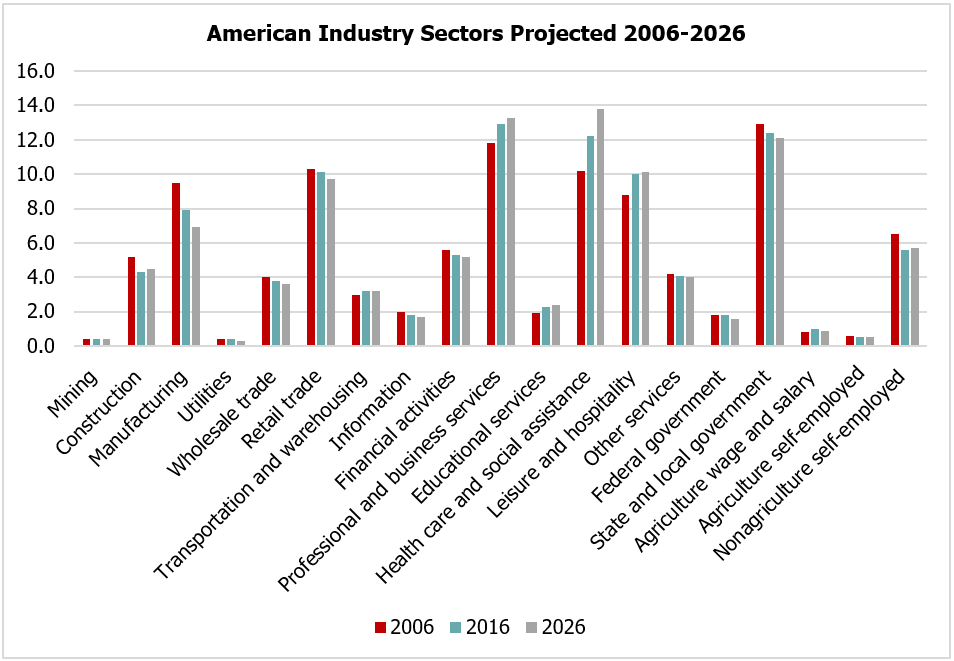Automation of nearly all industries has been impacting companies and communities for decades by making companies more productive with fewer workers making higher wages. COVID 19 will likely expedite this economic trend as a robot cannot contract a human virus. Current economic projections see overall job growth in professional services, educational services, and health care while most other industry job growth remains steady or declines. Large declines are anticipated to continue in manufacturing, financial services, and government jobs. Automation is a major driver in changes for the American economic landscape. Technology advances are expected to have a major impact on a range of American industries as illustrated by the table below. Automation has been making America’s manufacturing industry the most competitive and productive in the world but it is also played a large part in dropping the number of manufacturing jobs in the U.S. About 9% of the US workforce is in manufacturing and this total has dropped from over 30% in the 1950s. However, recent advances in machine learning, robotics and artificial intelligence are driving major changes in the economic marketplace all of which impact a region’s economic development strategy. Employment in production occupations is projected to decline 4 %, with a loss of about 423,200 jobs from 2019 to 2029.[i] Technological advancements are expected to continue to replace many of the manufacturing workers that make

up a large share of the production occupations.[i] Fewer workers are expected to be needed in the manufacturing sector as many processes have become computer-controlled.[ii] While this may appear to be bad economic development news, automation of the manufacturing industry actually increases the wages of the workers that remain but also will create an opportunity for rural markets that simply have a workforce pool too small for a 3000 worker manufacturer. Advanced manufacturing facilities with fewer, highly skilled workers may well be a good fit for rural markets.